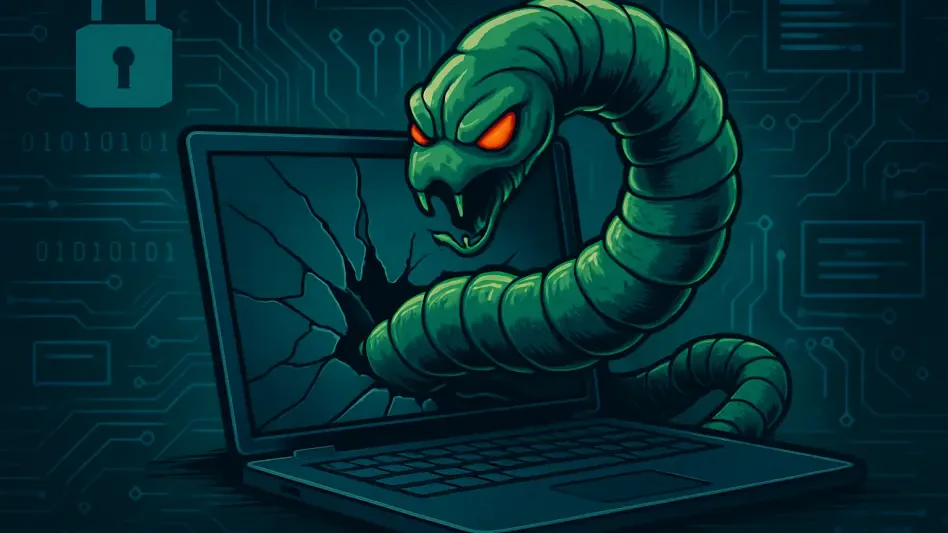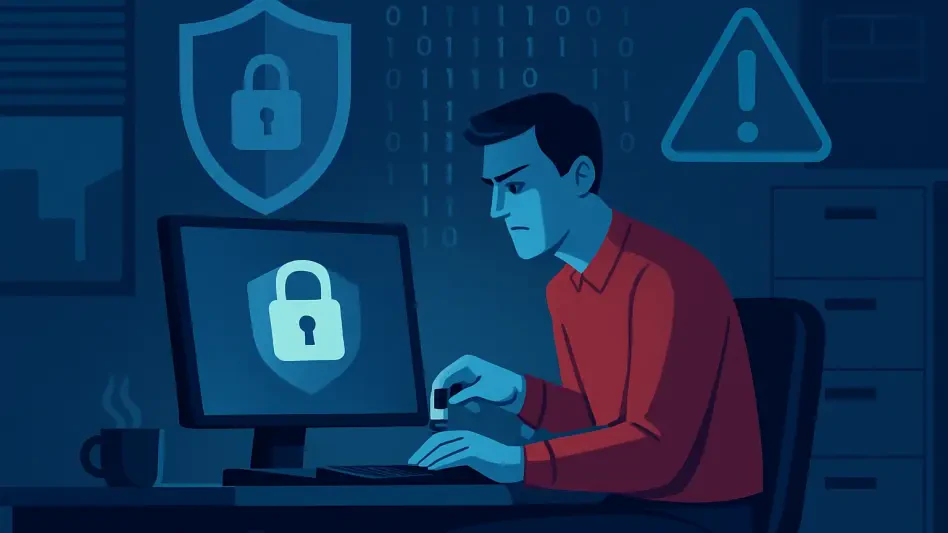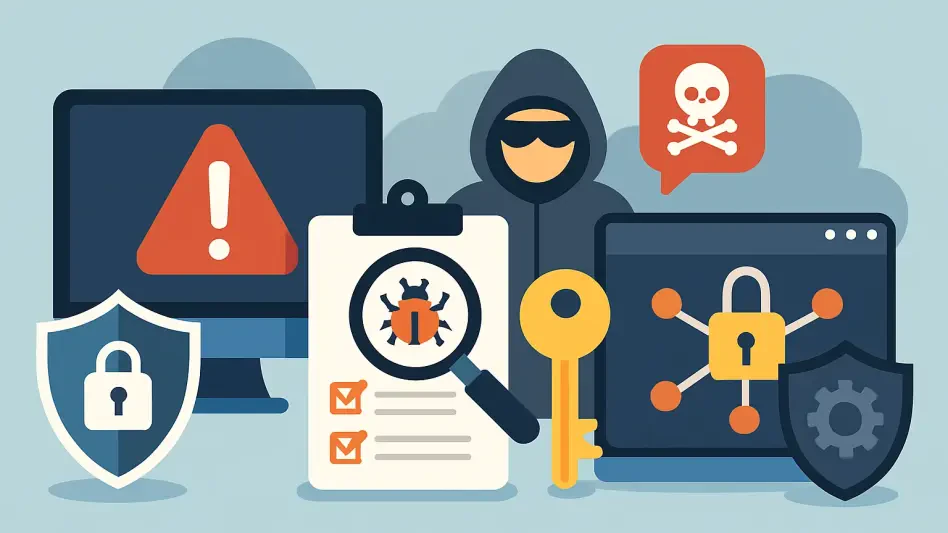In an era where digital communication is the backbone of business operations, cybercriminals are finding increasingly deceptive ways to exploit trust and infiltrate systems with devastating consequences. A recent surge in cyberattacks has revealed a particularly cunning method: hackers are leveraging fake invoice emails to distribute XWorm, a menacing remote-access trojan capable of stealing login credentials, passwords, and sensitive data from unsuspecting victims. These seemingly innocuous emails, often disguised as routine business correspondence, pose a significant threat to both individuals and organizations by exploiting human psychology and outdated technology. The stealthy nature of XWorm allows it to operate undetected, granting attackers full control over compromised devices and paving the way for further malicious activities. This alarming trend underscores the urgent need for heightened awareness and robust cybersecurity measures to combat such sophisticated threats in the ever-evolving digital landscape.
Unmasking the Deceptive Delivery Method
The initial stage of this cyberattack campaign is deceptively simple yet remarkably effective, relying heavily on social engineering to trick users into lowering their guard. Cybercriminals craft emails that mimic legitimate business communications, often posing as account officers or vendors requesting payment for an overdue invoice. These messages are polite and professional, creating a sense of urgency for the recipient to open the attached file and review the supposed document. However, the attachment—typically a Visual Basic Script (.vbs) file—serves as the gateway for XWorm malware. Once opened, the file triggers a silent installation process with no visible alerts or warnings, leaving victims unaware of the breach until significant damage occurs. This approach exploits the inherent trust many place in routine financial correspondence, making it a potent tool for attackers. The use of .vbs files, a legacy format rarely seen in modern business, adds an unexpected twist, as many email filters and users may overlook such outdated threats, allowing the malware to slip through undetected.
Beyond the initial deception, the broader implications of this delivery method reveal a calculated strategy to target a wide range of victims, from small businesses to large enterprises. The simplicity of the fake invoice tactic belies the complexity of its impact, as it capitalizes on human error—a factor that even advanced security systems struggle to mitigate. Hackers often tailor these emails with specific details, such as company names or transaction references, to enhance their authenticity and increase the likelihood of success. This personalization amplifies the risk, as recipients are more inclined to trust communications that appear relevant to their operations. Additionally, the reliance on outdated file types like .vbs highlights a gap in cybersecurity awareness, as many organizations fail to account for threats from formats considered obsolete. As these attacks proliferate, the need for education on recognizing phishing attempts and scrutinizing email attachments becomes paramount to prevent falling prey to such insidious schemes.
Exploring the Sophisticated Infection Mechanism
Delving into the technical intricacies of XWorm’s infection process reveals a multi-stage attack designed to evade detection and maximize persistence on compromised systems. The journey begins with the .vbs file, which contains heavily obfuscated code to obscure its malicious intent. Upon execution, it drops a batch file named IrisBud.bat into the Windows temporary folder, which then runs invisibly using Windows Management Instrumentation. This batch file copies itself to the user profile directory as aoc.bat to ensure it remains active even after system reboots. Hidden payloads, disguised as comments within the script, are decrypted and decompressed via PowerShell commands, ultimately loading malicious executables into memory through fileless execution. This technique avoids leaving traditional traces on the hard drive, making it challenging for antivirus software to detect. The presence of a unique mutex identifier, as confirmed by sandbox analysis, further solidifies XWorm’s classification as a severe backdoor threat.
The sophistication of this infection chain extends beyond mere evasion, showcasing a deliberate effort to maintain long-term access to infected systems for data theft and surveillance. Once embedded, XWorm grants attackers comprehensive control, enabling keystroke logging, user monitoring, and the extraction of sensitive files without arousing suspicion. The malware’s ability to deploy additional threats, such as ransomware, compounds the danger, turning a single breach into a gateway for broader attacks. The use of fileless execution and obfuscated scripts demonstrates an advanced understanding of system vulnerabilities, allowing hackers to bypass conventional security measures with alarming ease. This complexity underscores the evolving nature of cyber threats, where attackers continuously adapt their methods to outpace defensive technologies. For organizations, understanding these intricate mechanisms is crucial to developing effective countermeasures and ensuring that security protocols address both technical exploits and the human factors that enable them.
The Growing Threat of Malware-as-a-Service
A particularly concerning aspect of XWorm’s proliferation is its availability through a malware-as-a-service (MaaS) model, which significantly lowers the barrier to entry for aspiring cybercriminals. This business model allows even individuals with minimal technical expertise to access sophisticated tools and infrastructure for launching attacks, maintaining backdoor connections, and harvesting stolen data. By offering XWorm as a subscription or one-time purchase on underground forums, developers democratize cybercrime, enabling a broader pool of malicious actors to execute high-impact campaigns. This accessibility amplifies the frequency and scale of attacks, as hackers can target multiple victims simultaneously without needing to build their own malware from scratch. The MaaS trend represents a shift in the cyber threat landscape, where the commercialization of hacking tools fuels a thriving black market, posing unprecedented challenges to global cybersecurity efforts.
The implications of the MaaS model extend far beyond individual attacks, signaling a systemic issue that demands a coordinated response from both public and private sectors. As XWorm and similar malware become more widely available, the risk of widespread data breaches and financial losses grows exponentially, affecting industries ranging from healthcare to finance. The ease with which attackers can acquire such tools also complicates attribution, making it harder to trace and prosecute perpetrators. Security analysts have noted that this democratization of cybercrime fosters an environment where attacks are not only more frequent but also more varied in their execution, as different actors adapt the malware to suit their objectives. To counter this escalating threat, organizations must prioritize proactive defenses, such as regular software updates, advanced threat detection systems, and employee training on recognizing suspicious communications. The battle against MaaS-driven malware like XWorm requires a multi-layered approach to disrupt the economic incentives driving this underground economy.
Strengthening Defenses Against Evolving Cyber Threats
Reflecting on the damage inflicted by XWorm through fake invoice campaigns, it becomes evident that cybercriminals have honed their ability to exploit both technological and human vulnerabilities with devastating precision. The stealthy deployment of this malware, coupled with its comprehensive control over infected systems, has left countless victims grappling with stolen data and compromised security in the aftermath of these attacks. The reliance on outdated .vbs files and intricate infection chains caught many off guard, as traditional defenses struggled to keep pace with such innovative tactics. The malware-as-a-service model further compounded the problem, enabling a wave of attackers to leverage sophisticated tools without significant expertise. Looking back, these incidents serve as a stark reminder of the persistent and adaptive nature of cybercrime, highlighting the critical gaps that exist in email security and threat awareness.
Moving forward, the focus must shift to actionable strategies that fortify defenses against such cunning threats. Organizations should implement stricter email filtering policies to block suspicious attachments, particularly those using legacy formats like .vbs, while investing in advanced endpoint protection to detect fileless execution techniques. Employee training programs need to emphasize the importance of scrutinizing unsolicited communications, even those appearing legitimate, to reduce the risk of social engineering attacks. Additionally, collaboration between cybersecurity firms and law enforcement can help dismantle MaaS platforms by targeting their infrastructure and disrupting the supply chain of malicious tools. Regular updates to security protocols, coupled with real-time threat intelligence sharing, will be essential to stay ahead of evolving attack methods. By adopting a proactive stance and fostering a culture of vigilance, businesses and individuals can better safeguard their digital environments from the next wave of sophisticated malware campaigns.








